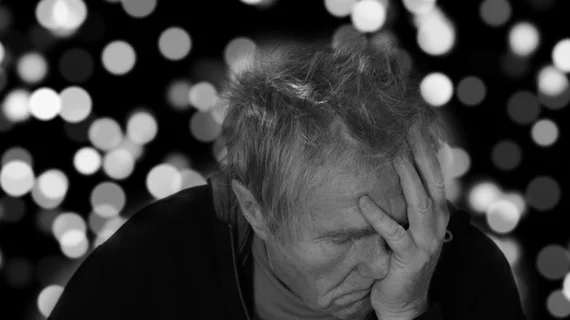New study may give insight into the neurologic dysfunction of some long-COVID patients
Vessel wall imaging—an MRI technique that offers high resolution images of vessel walls—may hold clues as to the mechanisms by which COVID infections continue to cause neurologic symptoms in some patients.
The technique was center stage recently, when researchers conducted a study to assess whether cerebrovascular reactivity (CVR) impairment had any associations with abnormal findings on vessel wall imaging (VWI) in patients with post-COVID neurologic conditions.
CVR is a quantitative measure of the function of the neurovascular unit (NVU). It registers changes in cerebral blood flow in response to vasoactive stimuli and, when impaired, it increases patients’ risk of stroke, especially when in the presence of other medical conditions, researchers involved in the study explained.
This sort of inflammation can be detected via VWI. Prior research has observed abnormal VWI findings in patients with COVID who present with acute ischemic stroke, but less is known about whether these inflammatory changes persist beyond recovery of the initial infection.
“After the acute phase of SARS-CoV-2 infection, as many as 76% of patients experience persistent neurologic symptoms not attributable to another diagnosis, including headache, difficulty concentrating, vision changes, disequilibrium, and fatigue,” Andrew L. Callen, MD, of the Department of Radiology at the University of Colorado School of Medicine, and co-authors explained. “The cause of these symptoms is not yet fully understood, but results of preliminary studies suggest that endothelial and circulatory dysfunction have a role.”
To better understand this, researchers conducted VWI that included arterial spin labeling perfusion imaging with acetazolamide stimulus to measure cerebral blood flow and CVR on 15 patients with prior COVID infections, in addition to 10 healthy controls.
Cerebral blood flow following acetazolamide administration in patients without a prior COVID infection was greater than in the post-COVID group. Whole brain CVR was lower among the post-COVID group, significantly so when excluding patients who had a severe infection, and VWI abnormalities were visualized in 40% of the post-COVID patients.
Based on the results of the study, researchers concluded that there was a relationship between chronic CVR impairment and prior COVID infection, although the clinical implications of these findings remain unclear.
The experts suggested their findings warrant additional research that includes a larger sample size. They also suggested including additional MRI sequences—T2-weighted, FLAIR, or susceptibility-weighted sequences—to further investigate differences between patients who have been infected by COVID and those who have not.
The study abstract is available in the American Journal of Roentgenology.

